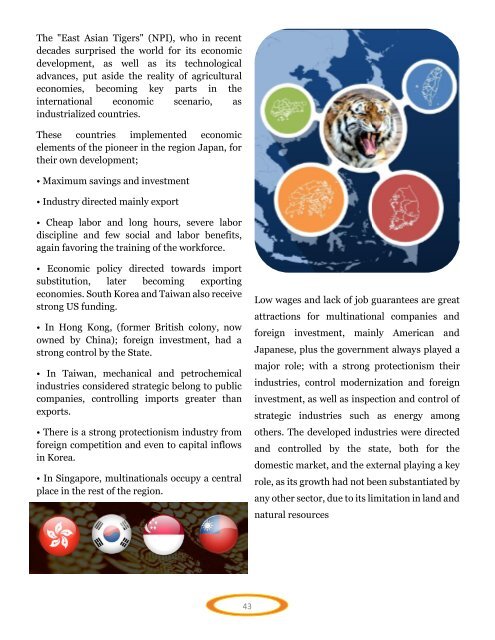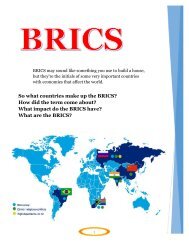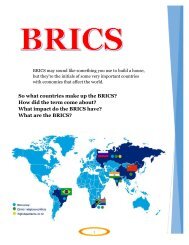You also want an ePaper? Increase the reach of your titles
YUMPU automatically turns print PDFs into web optimized ePapers that Google loves.
The "East Asian Tigers" (NPI), who in recent<br />
decades surprised the world for its economic<br />
development, as well as its technological<br />
advances, put aside the reality of agricultural<br />
economies, becoming key parts in the<br />
international economic scenario, as<br />
industrialized countries.<br />
These countries implemented economic<br />
elements of the pioneer in the region Japan, for<br />
their own development;<br />
• Maximum savings and investment<br />
• Industry directed mainly export<br />
• Cheap labor and long hours, severe labor<br />
discipline and few social and labor benefits,<br />
again favoring the training of the workforce.<br />
• Economic policy directed towards import<br />
substitution, later becoming exporting<br />
economies. South Korea and Taiwan also receive<br />
strong US funding.<br />
• In Hong Kong, (former British colony, now<br />
owned by China); foreign investment, had a<br />
strong control by the State.<br />
• In Taiwan, mechanical and petrochemical<br />
industries considered strategic belong to public<br />
companies, controlling imports greater than<br />
exports.<br />
• There is a strong protectionism industry from<br />
foreign competition and even to capital inflows<br />
in Korea.<br />
• In Singapore, multinationals occupy a central<br />
place in the rest of the region.<br />
Low wages and lack of job guarantees are great<br />
attractions for multinational companies and<br />
foreign investment, mainly American and<br />
Japanese, plus the government always played a<br />
major role; with a strong protectionism their<br />
industries, control modernization and foreign<br />
investment, as well as inspection and control of<br />
strategic industries such as energy among<br />
others. The developed industries were directed<br />
and controlled by the state, both for the<br />
domestic market, and the external playing a key<br />
role, as its growth had not been substantiated by<br />
any other sector, due to its limitation in land and<br />
natural resources<br />
43





